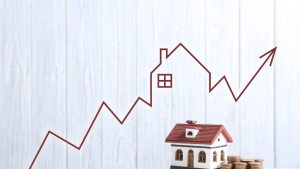
For many Australians, the idea of taking on more debt causes immediate stress. But what if that fear is stopping you from growing your long-term wealth? In today’s property market, understanding how to use strategic debt wisely could be the key difference between building wealth and falling behind.
Good Debt vs Bad Debt: What Every Property Investor Should Know
Not all debt is created equal. The key to using debt effectively is understanding the distinction between bad debt and good debt:
-
Bad debt is used to purchase depreciating items like cars, holidays, and consumer goods. These do not generate income or grow in value.
-
Good debt, also known as strategic debt, is used to acquire assets that appreciate in value and generate income — such as investment properties.
By borrowing to invest in property, you’re using other people’s money (the bank’s) to build your own wealth over time.
Why Strategic Debt Works in Australia’s Property Market
According to the Australian Institute of Health and Welfare, the average residential property price rose from $611,600 in December 2015 to $933,800 in December 2023 — a 60% increase over eight years. This growth illustrates how inflation and market trends reduce the real cost of debt over time.
For example, if you borrow $500,000 at 6% interest, and inflation averages 3%, the real value of your debt erodes each year. In ten years, that $500,000 debt is worth around $372,000 in today’s dollars, while your property’s value is likely rising.
Leveraging Tax Advantages to Reduce Cost
One of the key benefits of investment property in Australia is the tax efficiency of property loans. Interest payments on your investment loan are typically tax-deductible. If you’re in the 37% tax bracket, every dollar of interest effectively costs you only 63 cents.
This means a 6% loan has an after-tax cost of less than 4%, while the property may be growing in value at 5–7% annually — making strategic debt a profitable tool for building equity.
Investor Confidence Is Rising Despite Higher Interest Rates
Recent data from the Australian Bureau of Statistics showed a 18.8% increase in investor loan commitments in the 12 months to September 2024, with the strongest growth in NSW, Queensland, and Western Australia. This proves that experienced investors aren’t waiting for perfect market conditions — they’re acting on opportunity.
Waiting for certainty often means missing the upswing.
Why Most Property Investors Don’t Succeed
Despite property’s long-term performance, many investors never go beyond one property. In fact:
-
50% of investors sell their first property within five years
-
92% never own more than two properties
These outcomes are rarely caused by debt itself, but by poor planning, cash flow stress, or choosing the wrong location. Successful investors usually follow a disciplined strategy:
-
Stress-test finances against interest rate rises
-
Buy in areas with high rental demand and future growth
-
Use professional guidance to avoid emotional decisions
-
Build buffers for vacancy or maintenance costs
What the Reserve Bank Says About Household Debt
The Reserve Bank of Australia (RBA) has noted that rising household debt is often linked to structural changes like higher incomes, lower interest rates, and easier access to finance — especially since the 1990s. These changes have increased Australians’ borrowing capacity without necessarily increasing financial risk, particularly when debt is used to buy productive, appreciating assets like property.
The True Cost of Inaction: Opportunity Loss
Many people avoid property investing because they fear debt. But by doing so, they often miss years of capital growth and compounding returns.
A $600,000 property today will cost around $750,000 in five years at just 5% annual growth. By the time you feel ready, you may need a bigger deposit and higher loan — if you can afford it at all. Meanwhile, today’s investors will already have built equity and may be purchasing their next property.
How to Use Strategic Debt the Smart Way
The goal isn’t to take on more debt for the sake of it — it’s to use debt strategically and safely. Here’s a simple framework:
-
Focus on high-growth, high-demand areas with solid infrastructure
-
Buy properties with strong rental income to cover holding costs
-
Maintain cash buffers for unexpected events
-
Get professional advice on loan structures and risk management
-
Prioritise quality over quantity — one great investment can outperform three average ones
Final Thoughts: Debt Is a Tool, Not a Trap
Used poorly, debt can hold you back. But used strategically, property investment debt can help you build lasting wealth — especially in Australia’s resilient housing market.
The key is not to fear debt, but to understand it. Avoiding debt completely may feel safe, but it can also lead to missed opportunities as inflation erodes your savings and property prices continue to rise.
If you’re serious about building long-term wealth through property, it’s time to move from being debt-fearful to being strategically leveraged.
Ready to make debt work for you?
Don’t wait for perfect conditions — start building wealth with strategic debt today.
Book your free strategy session now





